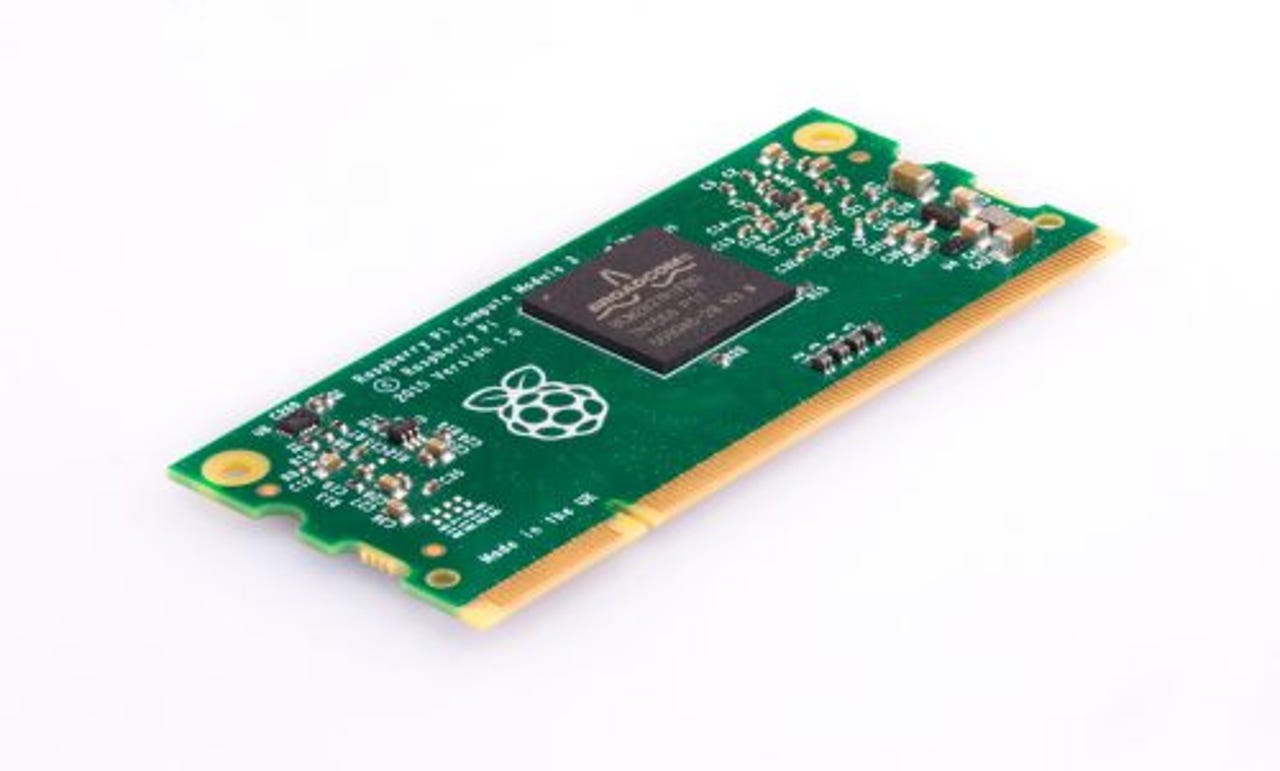Raspberry Pi Compute Module 3 launches at $30, ready to power up in other products


Raspberry Pi's Compute Module 3 launches today for $30.
Raspberry Pi Foundation has launched the Compute Module 3, a slimmed-down Raspberry Pi 3 for developing customized hardware, such as TV displays, industrial control systems, and home media players.
Unveiled today, the Compute Module 3 delivers double the RAM and a 10-times boost to CPU performance over the first iteration released in 2014.
The new Compute Module contains the guts of a Raspberry Pi 3, featuring a 64-bit Broadcom BCM2837 processor at up to 1.2GHz with 1GB RAM, and 4GB flash storage. By removing a number of ports, it offers a smaller design to make it more suitable than the Raspberry Pi for industrial applications.
The device also fits the DDR2 SODIMM sockets and has the same pin-out as the first Pi compute module. One notable change is that the Compute Module 3, at 31mm high, is one mm taller than the original Compute Module.
Along with the standard Compute Module, the Raspberry Pi Foundation has launched Compute Module 3 Lite, which has the same processor and 1GB RAM, minus the flash storage. Builders can add an eMMC device or SD card socket on the base board.
Finally, it's releasing an updated version of the Compute Module IO Board 3, a component that provides HDMI and USB connectors, powers the module and enables programming of its flash memory.
The standard Compute Module 3 costs $30 while the Lite version costs $25, excluding shipping and tax. The original Compute Module has been reduced to $25. They're available from distributors RS Components, element 14 and Farnell UK.
Showing off its commercial applications, Raspberry Pi Foundation highlights that the European arm of Japanese tech firm NEC has already integrated the module into a line of new large-format displays.
The Compute Module is being used to power signage software and presentations on the displays. The module is also being used by UK researchers for CubeSats, or mini-satellites made with off-the-shelf technology.
"The idea of the Compute Module was to provide an easy and cost-effective route to producing customized products based on the Pi hardware and software platform," writes Raspberry Pi Foundation's COO, James Adams.
"The thought was to provide the 'team in a garage' with easy access to the same technology as the big guys. The Module takes care of the complexity of routing out the processor pins, the high-speed RAM interface, and core power supply, and allows a simple carrier board to provide just what is needed in terms of external interfaces and form factor.
"The module uses a standard DDR2 SODIMM form factor, sockets for which are made by several manufacturers, are easily available, and are inexpensive."